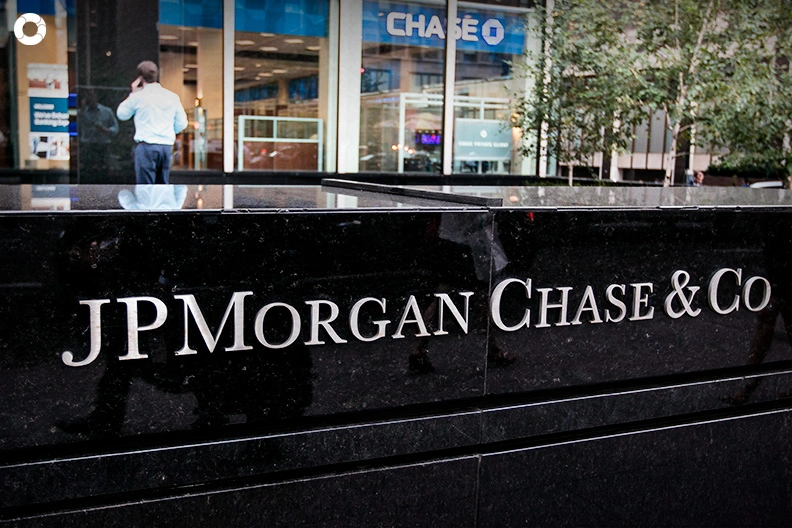What the TD bank case teaches us about modern AML failures
Late 2024 shook the banking world. The announcement of a $3 billion TD Bank AML settlement from the U.S. Department of Justice (DOJ) and the Financial Crimes Enforcement Network (FinCEN) sent ripples throughout the industry. At the time, it was the most significant anti-money laundering enforcement action ever taken against a Canadian bank operating within the United States.
Beyond the shocking headline, the case offers an opportunity for other financial institutions to plug any potential exploits in current systems. Even with internal warning signs and escalating regulatory notices, the lessons from the case go well beyond TD Bank as an institution. It highlights how AML governance helps prevent compliance failures across the board.

|
Table of contents |
Anatomy of the Failure: What Actually Happened?
AML stands for Anti-Money Laundering. Over 61,678 cases of AML crimes were reported to the United States Sentencing Commission in 2024, representing both business fraud and individual fraud activity.
The TD Bank incident occurred between 2014 and 2023. The bank allowed billions in transactions to pass through different accounts without proper review. Regulators discovered the bank failed to monitor roughly 92% of transaction activity (an estimated $18.3 trillion in value).
There was one such case where a Florida-based drug trafficking organization laundered $470 million through such accounts. In another, $39 million was sent to Colombian entities linked to criminal enterprises. Several internal emails were leaked, highlighting how staff joked about “watching money laundering happen in real time.”
To be clear, it wasn’t only AML compliance failures from internal alerts. Both the DOJ and FinCEN identified systemic issues in SAR filings, customer due diligence, and escalation protocols. Plenty of red flags were raised, but investigations were delayed or closed due to budget limits and staff shortages.
Regulatory Response and Penalties: What Was the Result?
As a result of all this unmonitored fraud, the DOJ and FinCEN levied a $3 billion TD Bank AML settlement. $1.8 billion was for the criminal penalty (DOJ) and $1.3 billion went to civil penalties (FinCEN). Plus, the company had to plead guilty to conspiracy, money laundering, and violating the Bank Secrecy Act.
When the DOJ made the announcement, it was supposed to represent a further escalation in holding “large institutions” criminally accountable for fraud and connected crime. The hope was to kick off a larger campaign of compliance, headlined by U.S. Attorney General and former U.S. Supreme Court Nominee Merrick Garland. It was to represent a broader regulatory trend of independent monitors overseeing remediation. Unfortunately, as administrations changed, so did the emphasis on specific programs. However, the mechanisms for compliance remain firmly in place.
For example, as part of the settlement, TD Bank agreed to oversight by Guidepost Solutions. This is an independent firm staffed by former federal prosecutors and intelligence professionals. They are to evaluate TD’s revised AML governance framework while overseeing any new technology-driven monitoring implementation. Guidepost will also conduct staff interviews, review compliance culture initiatives, and report to both the DOJ and FinCEN.
One other surprising part of the settlement is the agreed-upon $500 million allocated to remediation programming. That includes deploying advanced internal analytics and AI-based transaction monitoring. Even the recruitment of senior compliance officers must consist of previous experience in complex financial crime prevention.
Why This Case Matters for the Entire Industry
What many can consider a massive disruption to TD Bank’s regular operations is actually a significant benchmark for the rest of the banking industry. Yes, TD Bank will have to adapt, but that might provide a competitive advantage.
Expanding transaction volumes driven by newer, real-time payments and cross-border fintech partnerships are pushing the limits of traditional institutions. Money laundering is gaining in technological sophistication, including layered transactions and the ever-present threat of cryptocurrencies like Bitcoin, Ethereum, Litecoin, and various tokens. The pressure to reduce compliance budgets is no longer an option compared to growing regulatory frameworks.
Paper compliance is not going to be enough to satisfy regulators. AML governance must extend well beyond regular compliance and risk management officers, and instead, involve senior leadership and various executive boards. Active monitoring, funding, and support program integrity is necessary to avoid the same hefty fine as TD Bank.
How can businesses and institutions shift operations based on these lessons?
- Funding Must Match Risk Exposure: Compliance budgets need to be flexible based on a more dynamic risk environment. Funds have to be spent to better detect and respond to suspicious activity, both for compliance and to undercut evolving threats. Companies should link compliance budgets to transaction volume, risk profiles, and company complexity.
- Culture Can Strengthen Compliance: The emails joking about watching money laundering in real-time indicate a cultural issue. It’s not just reputational damage, but a sign that a shift must occur from the top down. AML responsibility must be embedded into performance reviews, promotions, and compensation packages.
- Board-Level Oversight: If these trends continue, regulators will shift responsibility to boards for AML governance. Leaders must engage in decisions and risk reporting at the operational level. Quarterly board briefings on AML program health and feedback from risk managers are crucial.
The Role of Technology and Continuous Monitoring
One such integration that will help avoid TD Bank’s mistake is anti-money laundering programs utilizing modern systems and innovations. AI tools can help with analytics to uncover patterns while network analysis tools identify linked accounts or structuring activities. Machine learning models help institutions adapt to emerging threats, and the need for cross-platform integration unifies monitoring on all banking actions.
Solutions like Pirani Risk support this comprehensive approach by consolidating the improvement of monitoring, reporting, and workflow management – all into a singular system with easy-to-read dashboards. That will ensure leadership receives custom reporting related to AML activity and risk, demonstrating greater compliance readiness to regulators.
Regulatory Expectations Moving Forward
FinCEN is on the hunt. More emphasis on penalties that will include structural changes and personal accountability is on the rise. Updated guidance stressing the importance of “impact over intent” highlights how unintentional lapses that allow laundering will still result in significant penalties.
The point is that expectations are changing and institutions must keep pace. Monitoring must include 100% of relevant transactions. More rapid SAR filings need to meet regulatory timelines (including quality control checks). This reporting must extend to vendors and correspondent oversight.
Finally, a modern bank should have all historical transaction data properly collated and prepared. That way, if an audit is required or an investigation is initiated, the company is prepared and willing to comply fully. That signals a flexible system willing to grow along with the evolving risk.
Banks would do well to develop action plans that include internal AML risk assessments and training tools that invest in people at all organizational levels. That will align the company structure with current and new compliance goals around the corner. The TD Bank settlement is likely only the first shot fired in what promises to be a complex and rapidly escalating battle, thanks to modern tools that make fraud easier to initiate or remain undetected.
Final Thoughts
There is an uncomfortable fact that all banks and financial institutions must face. The TD Bank AML settlement shows that even when a company is well capitalized, the vulnerability of catastrophic AML compliance failures exists. This one event will be studied for years to come, but it offers a clear reason for businesses to shift compliance efforts or run the risk of equally harsh fines and structure changes.
The tolerance for ineffective anti-money laundering programs is gone. That is a good thing for both consumers and financial institutions. It marks a clear line in the sand to shift from reactive systems to proactive AML governance. Using tools with advanced AI analytics and ML integrations ensures this compliance.
Pirani Risk provides customized software to automate and simplify risk management, including AML compliance. It ensures detection, error reduction, time efficiency, and decision-making are all backed by transparent reporting and trend analysis. Such information helps cultural shifts and aligns risk management with current regulatory demands. Sign up today for a demo and experience the difference yourself.
Curious about what your risk management process would look like with Pirani?
Want to learn more about risk management? You may be interested in this content 👇
You May Also Like
These Related Stories

Jérôme Kerviel's fraud at Société Générale bank

AML for investment advisers: What’s changing and why it matters

Learn from Worldcom to Prevent Accounting Fraud

Case study: JP Morgan Chase's financial troubles

Upgrade your AML risk management with AML+



No Comments Yet
Let us know what you think